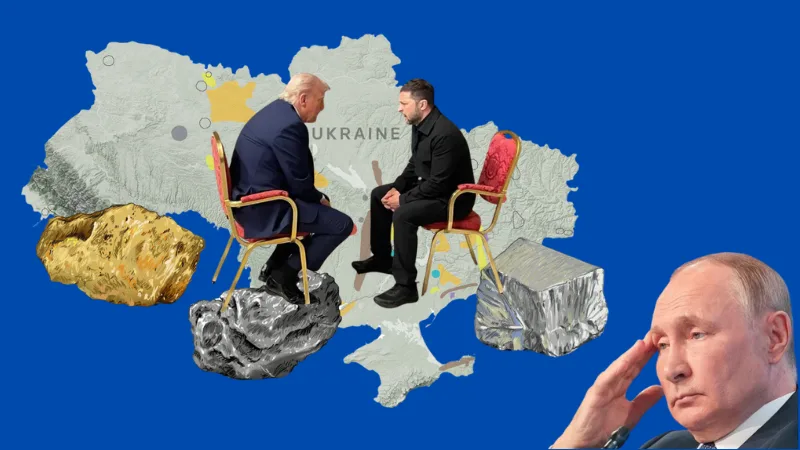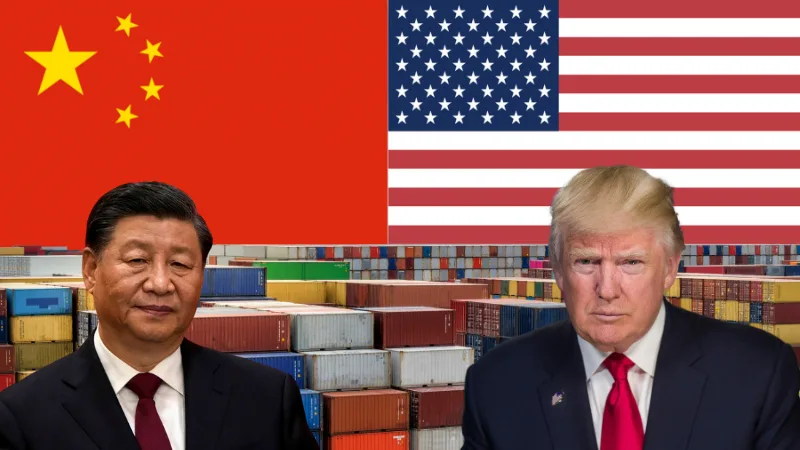In a major step toward securing critical mineral supply chains and supporting Ukraine’s reconstruction, the United States and Ukraine signed a landmark agreement on April 30, 2025, establishing a long-term partnership focused on extracting and developing Ukraine’s vast mineral resources. The move is being hailed as a strategic win for both nations—one that could reshape global markets for rare earths, lithium, and other essential inputs for modern industries ranging from electric vehicles to national defense.
The Core of the Deal: Access and Investment
Under the newly signed agreement, the United States will gain preferential access to Ukrainian mineral projects, including key critical minerals such as:
- Lithium – vital for electric vehicle (EV) batteries and energy storage
- Titanium – used in aerospace and defense applications
- Graphite – a critical anode material in lithium-ion batteries
- Uranium – essential for nuclear energy generation
- Rare earth elements – crucial for electronics, EV motors, and military systems
These resources are central to the U.S.’s push to reduce its dependency on Chinese mineral supply chains, which currently dominate the global market for rare earths and key battery materials.
“This deal opens the door for the U.S. to diversify its critical minerals supply while supporting Ukraine’s recovery in a way that strengthens both economies,” a senior U.S. official told Business Insider.
The United States–Ukraine Reconstruction Investment Fund
A cornerstone of the agreement is the creation of the United States–Ukraine Reconstruction Investment Fund, a new financing mechanism designed to:
- Attract private and institutional investment into Ukrainian infrastructure and mineral extraction projects
- Use licensing fees and profits from new mining ventures to fund the rebuilding of Ukraine’s war-damaged economy
- Provide transparent, non-debt-based financing, ensuring that Ukraine maintains full ownership of its natural resources
The fund will be jointly managed by Ukrainian officials and the U.S. International Development Finance Corporation (DFC), which specializes in mobilizing capital for development in emerging markets.
“This is not about debt. It’s about partnership and future profits,” said a Ukrainian economic advisor involved in the deal, as quoted by The Wall Street Journal.
Addressing Past Tensions and Reaching Consensus
This agreement wasn’t signed overnight. According to The Times, early drafts of the deal sparked friction between the two governments.
Initial U.S. proposals reportedly included demanding a majority stake in Ukraine’s most valuable mineral assets, something President Volodymyr Zelenskyy’s administration firmly rejected. Ukrainian officials insisted that any deal must preserve national control over resources and avoid burdening the country with new debt obligations, especially given the fragile post-war recovery underway.
After months of behind-the-scenes negotiations—and growing pressure on the U.S. to secure non-Chinese mineral supply chains—the deal was redrafted to focus on profit-sharing and investment partnerships instead of asset control. President Zelenskyy eventually signed off on the updated version after receiving assurances that Ukraine would remain the primary beneficiary of its resource wealth.
No Military Commitments—But a Strategic Signal
Although the minerals agreement does not include any explicit military provisions, analysts see it as a clear signal that Washington intends to maintain and deepen its long-term commitment to Ukraine, even as calls for scaled-back defense aid grow louder in some corners of U.S. politics.
The final version of the deal leaves open the possibility of expanded air defense and cybersecurity support, especially as Russia continues to launch drone and missile attacks on critical Ukrainian infrastructure.
“This agreement adds economic muscle to a security partnership that’s already reshaping the map of Eastern Europe,” said a senior official quoted by The Guardian.
Why Ukraine’s Minerals Matter to the U.S.
Ukraine is widely seen as one of Europe’s most underdeveloped mineral frontiers. According to the U.S. Geological Survey, the country ranks among the top 10 globally for recoverable reserves of titanium, lithium, and iron ore.
Until now, geopolitical instability and lack of infrastructure kept most of these resources untapped. That’s starting to change.
As the world races to electrify transportation, expand renewable energy, and rearm in the face of geopolitical competition, these minerals have become 21st-century oil—strategic commodities that can shape alliances and redefine trade routes.
For U.S. Interests, the Goals Are Clear:
- Reduce dependence on China for rare earths and graphite
- Build Western-aligned supply chains for green energy and defense
- Support Ukraine’s independence by bolstering its economic self-reliance
Investor Implications: Opportunities and Risks
From an investment standpoint, the deal opens new opportunities—and risks.
Opportunities:
- Access to frontier markets: Investors with exposure to firms operating in or alongside the U.S.-Ukraine minerals partnership could benefit from first-mover advantages.
- Critical minerals ETFs: Funds like Global X Lithium & Battery Tech ETF (LIT) or VanEck Rare Earth/Strategic Metals ETF (REMX) may see increased attention if new supply sources diversify away from Asia.
- Defense & energy sectors: Companies across aerospace, battery production, and nuclear energy could benefit from more secure and diversified raw materials.
Risks:
- Geopolitical instability: Active war zones pose logistical and reputational challenges, not to mention physical security risks for mining infrastructure and personnel.
- Resource nationalism: Despite current assurances, Ukraine may renegotiate terms in the future to claim a larger share of profits.
- Infrastructure gaps: Mining and transport networks in Ukraine are underdeveloped and often damaged by war. Investors should expect long timelines and high upfront costs.
Global Strategic Impact: The China Factor
This deal isn’t just about Ukraine—it’s part of a broader geoeconomic chessboard.
Currently, China controls:
- Over 60% of global rare earth production
- Nearly 80% of graphite processing capacity
- Significant portions of cobalt and lithium refining
By securing new resource partnerships outside of Chinese influence, the U.S. and its allies aim to reduce supply chain vulnerabilities exposed during the COVID pandemic and heightened by rising U.S.–China tensions.
“This is how you build economic resilience: by diversifying supply, strengthening allies, and investing in alternatives,” said a policy analyst at the Atlantic Council.
What’s Next?
While the agreement has been signed, it still requires ratification by Ukraine’s Parliament, a step that is expected to proceed swiftly given the political momentum and economic incentives involved.
Over the coming months, keep an eye on:
- Announcements of specific mining projects and contractors
- Capital flows into the U.S.-Ukraine fund
- Moves by other Western countries to establish similar mineral partnerships with emerging markets
A Deal with Long-Term Implications
The U.S.–Ukraine minerals agreement is more than just a resource deal—it’s a strategic alliance with economic, security, and geopolitical implications.
For investors, it represents both a signal of where global power dynamics are heading and a real-world opportunity to gain exposure to sectors vital to the next industrial age—green energy, EVs, defense tech, and beyond.





